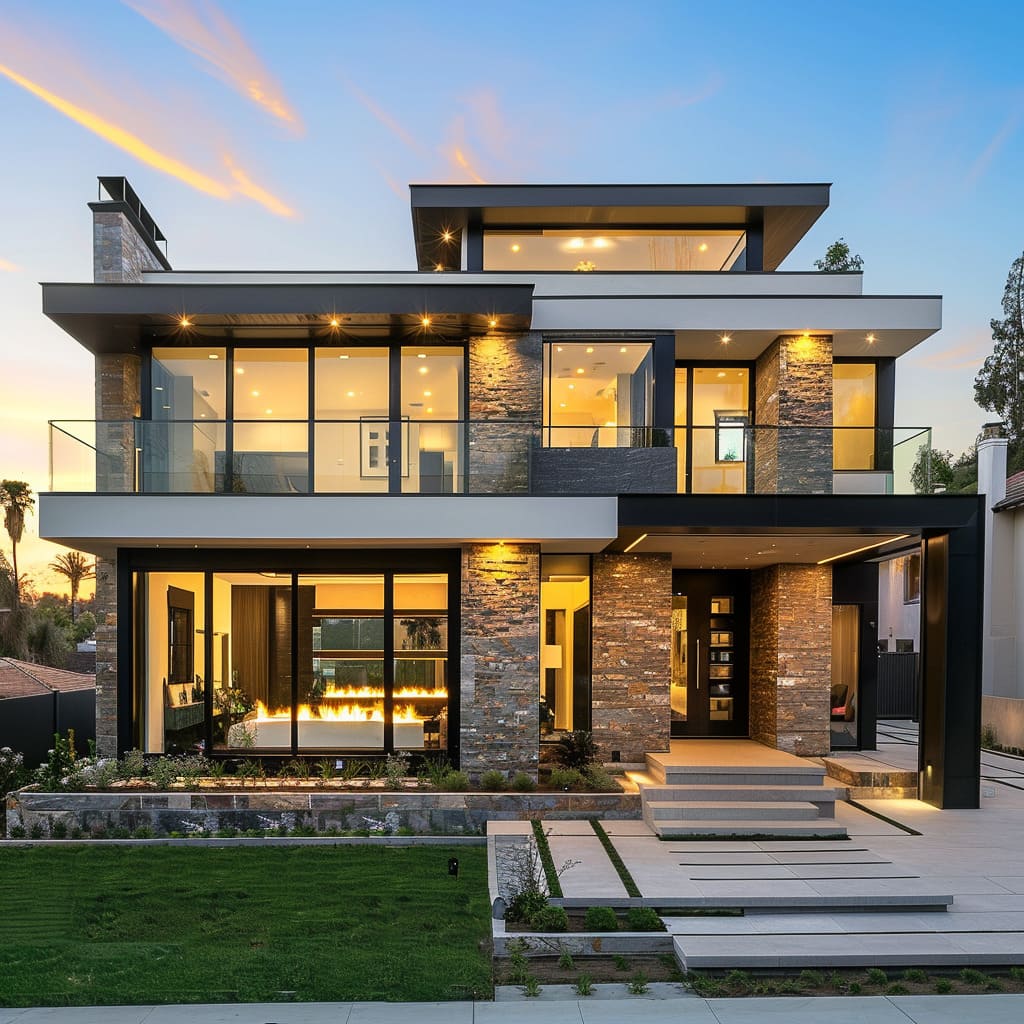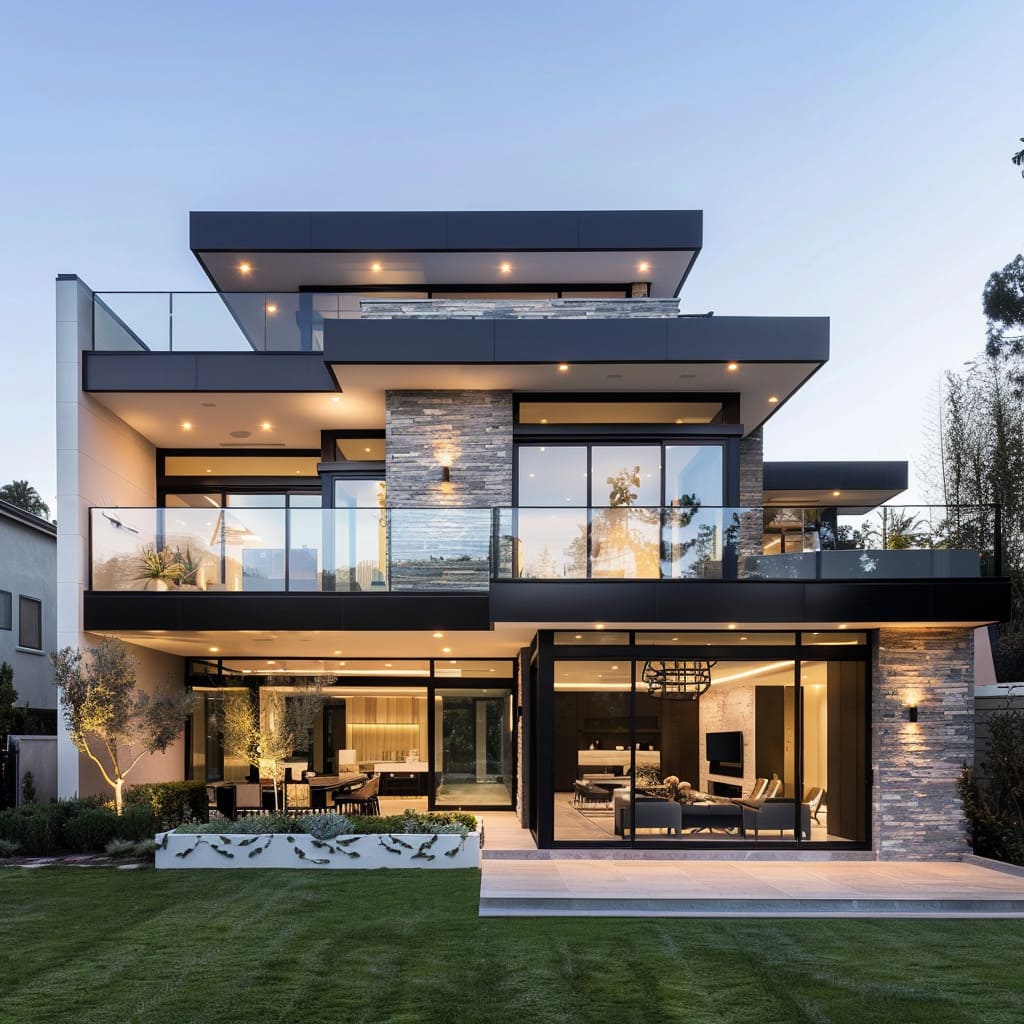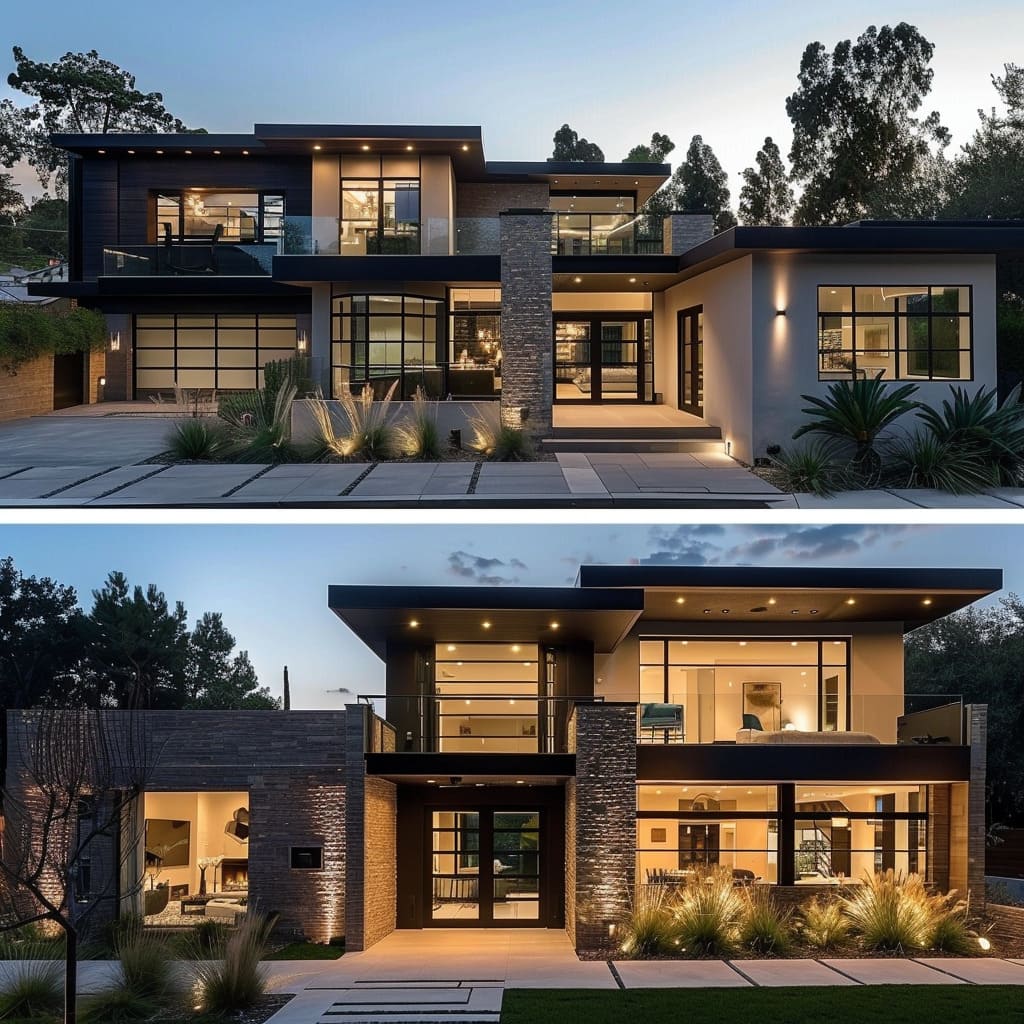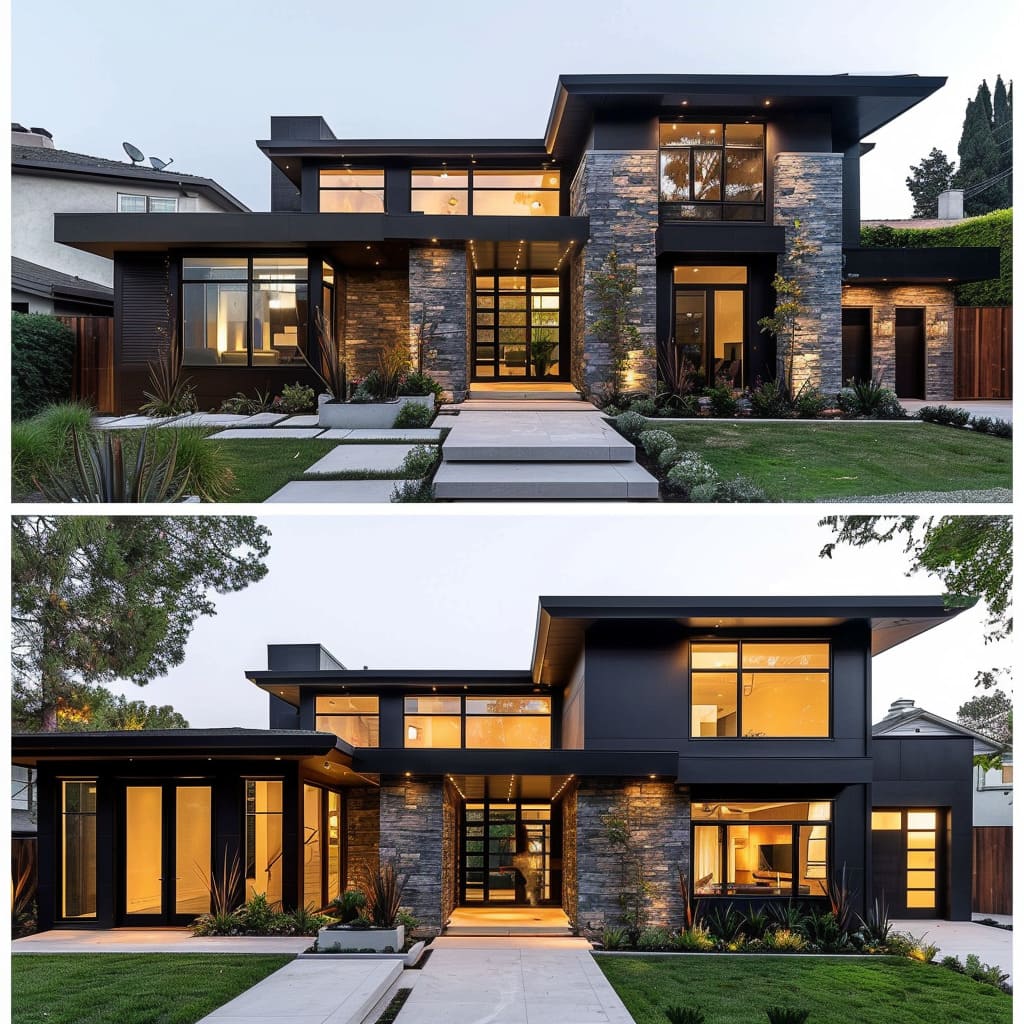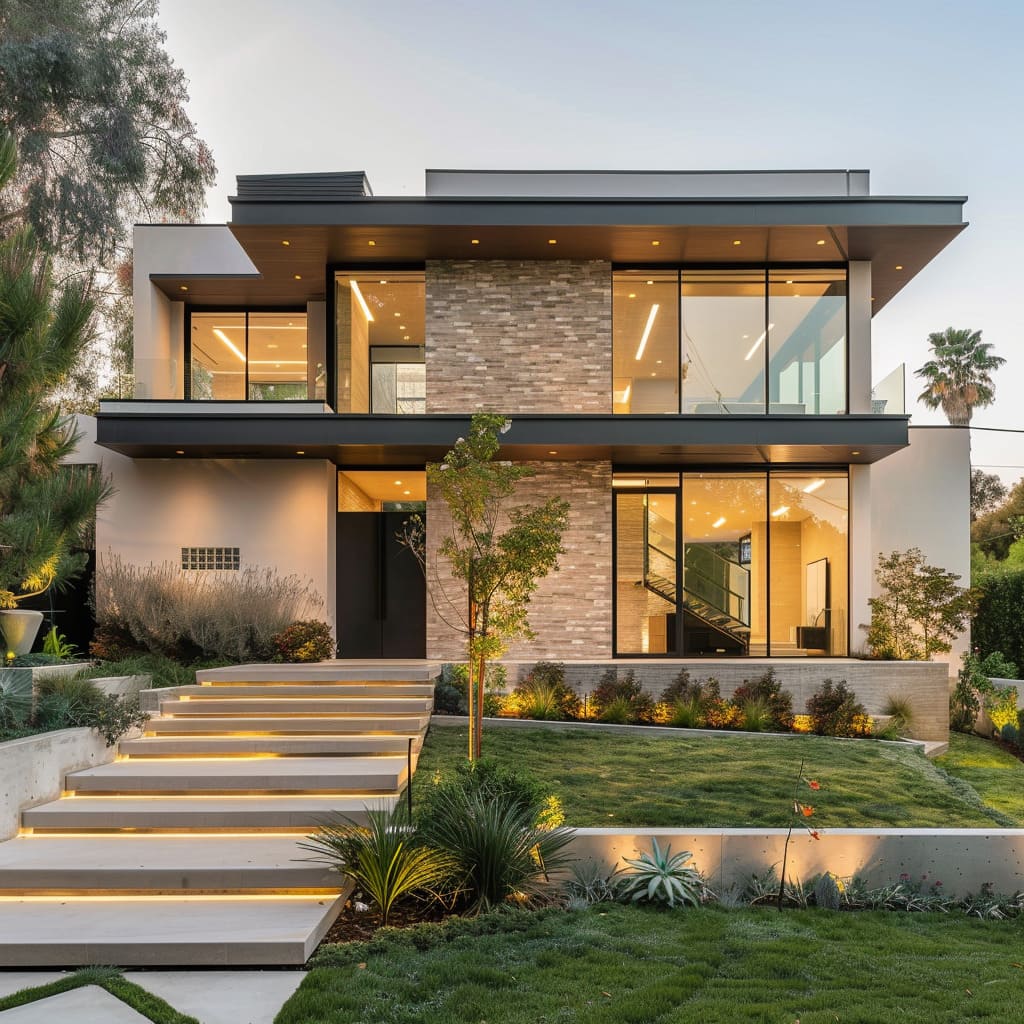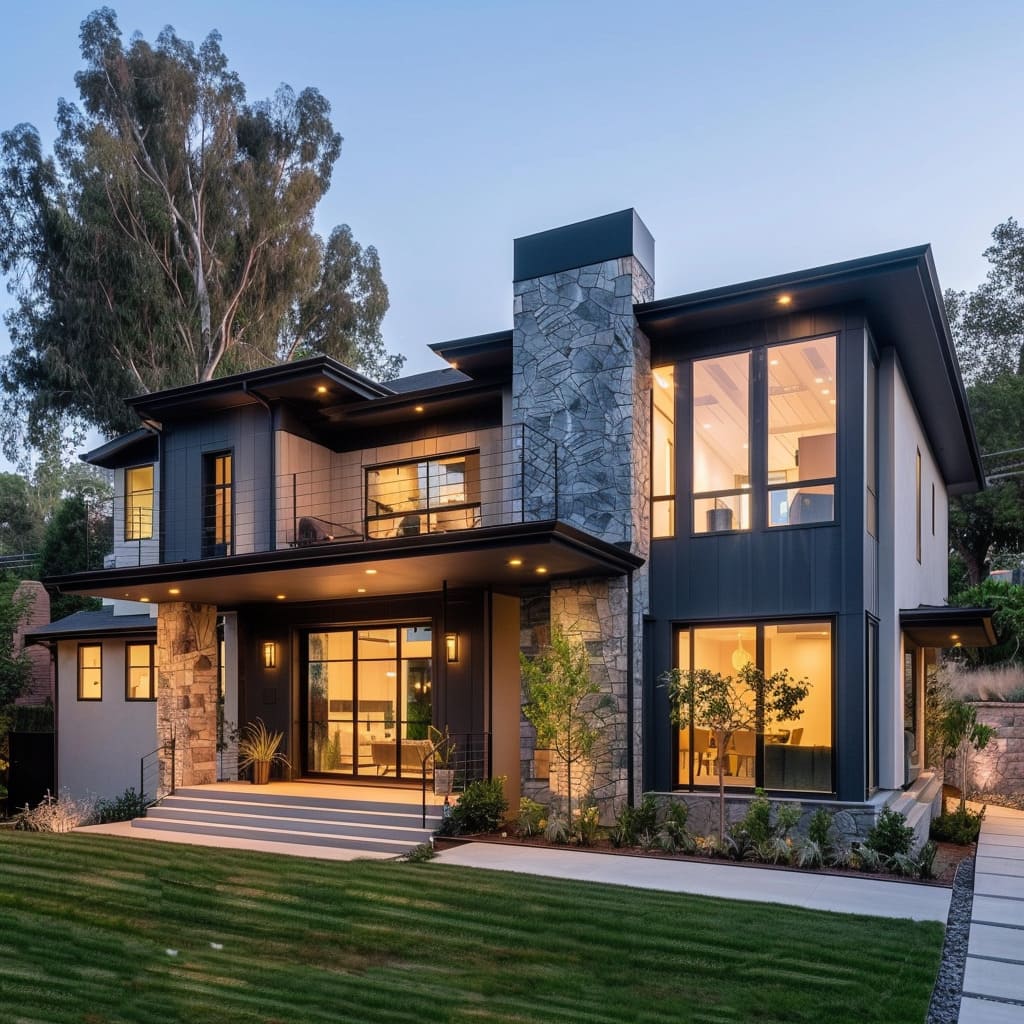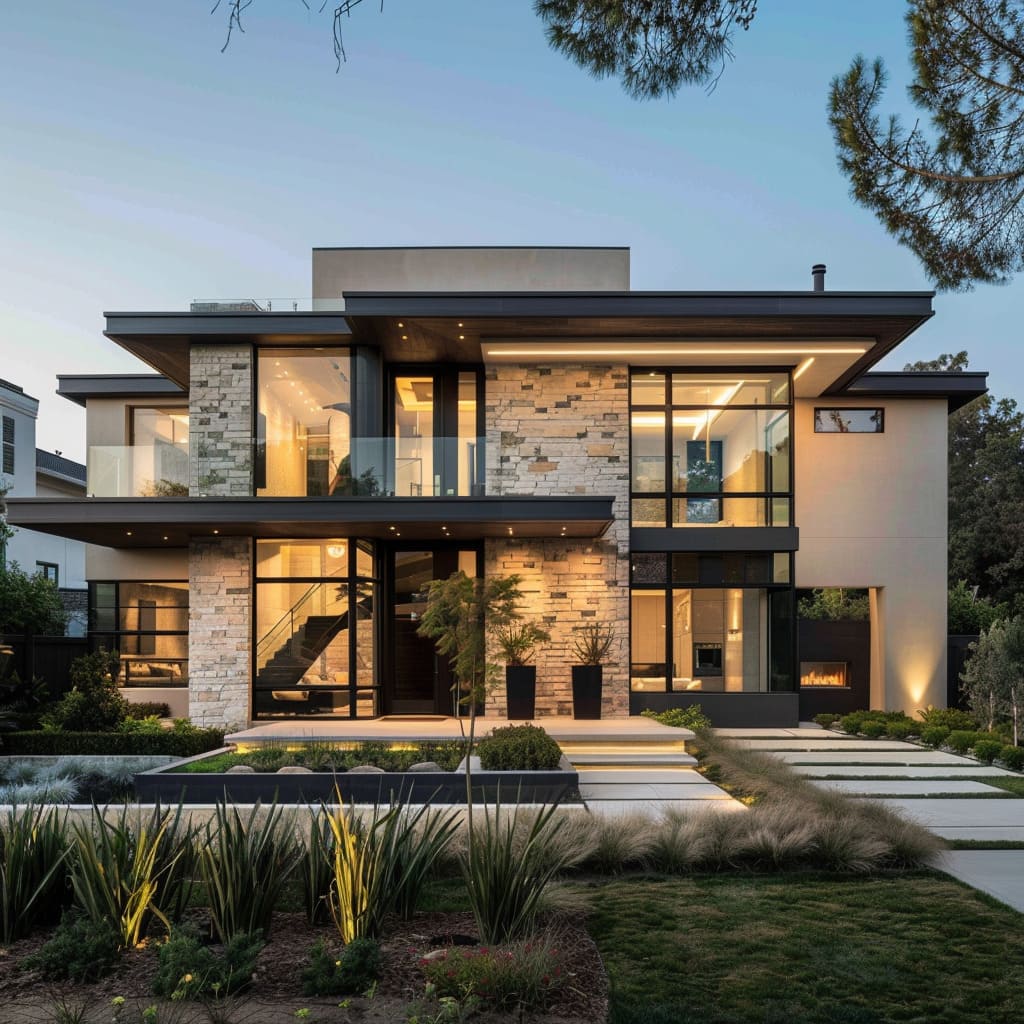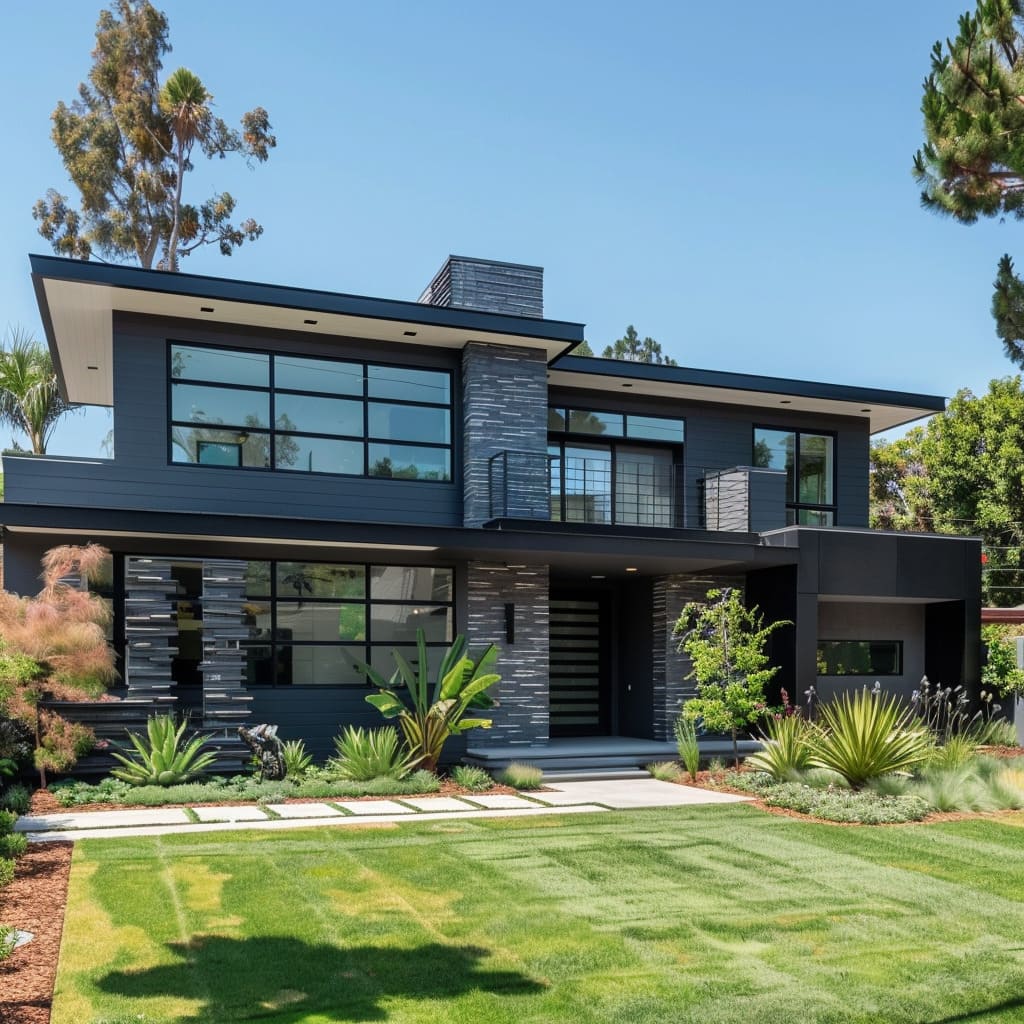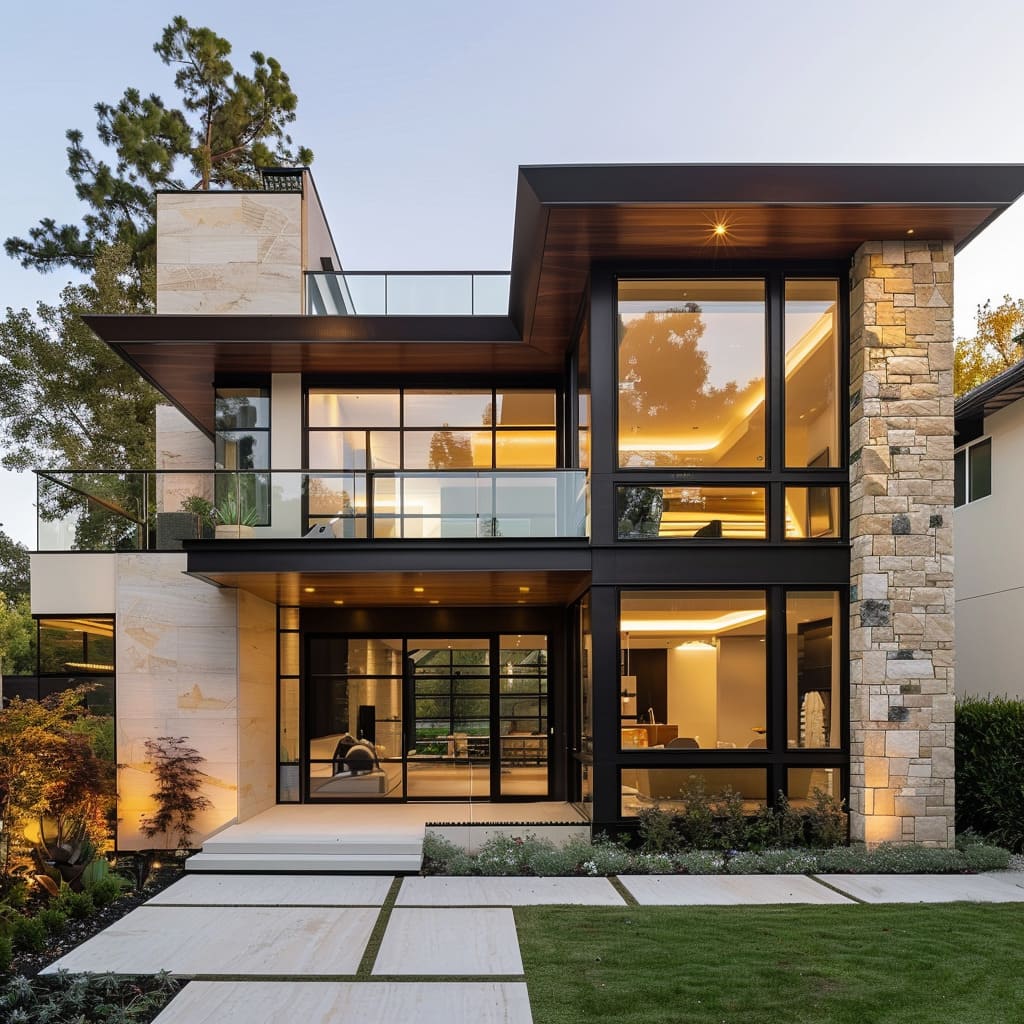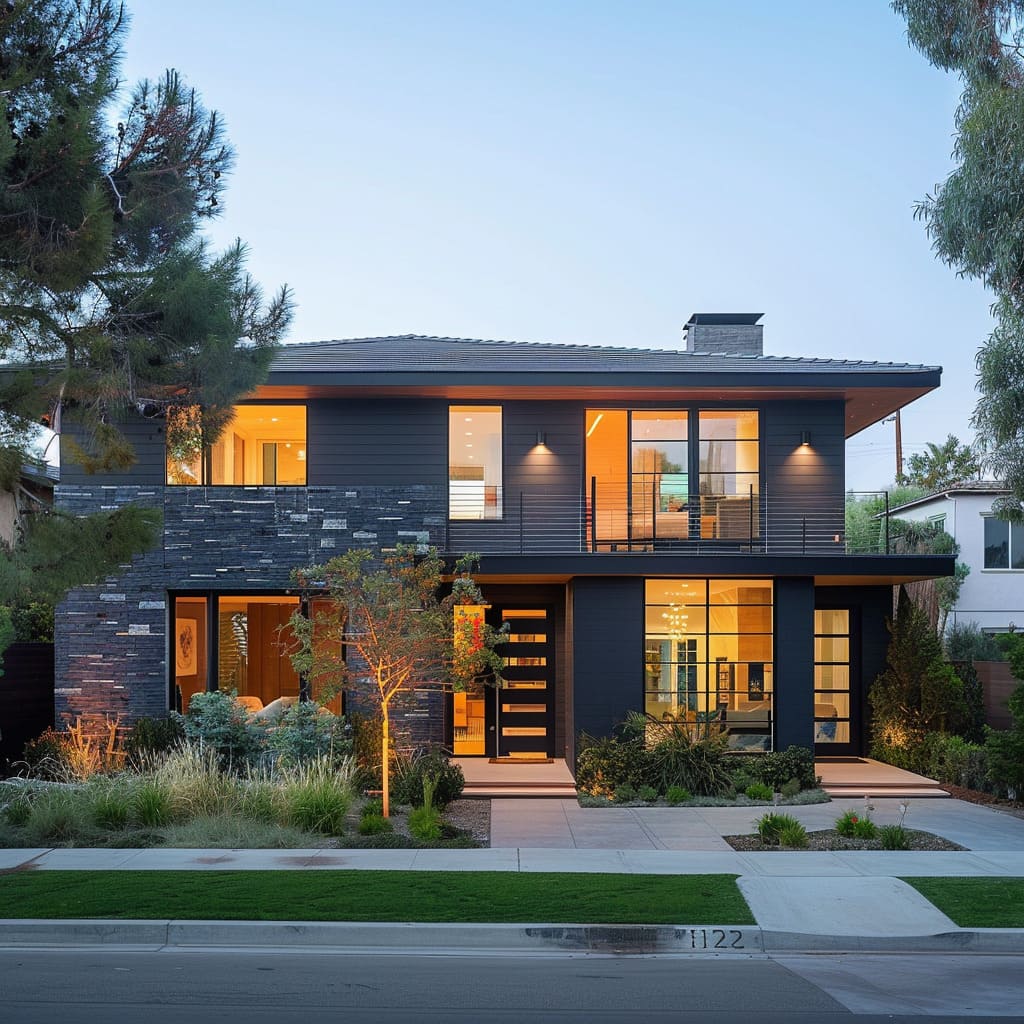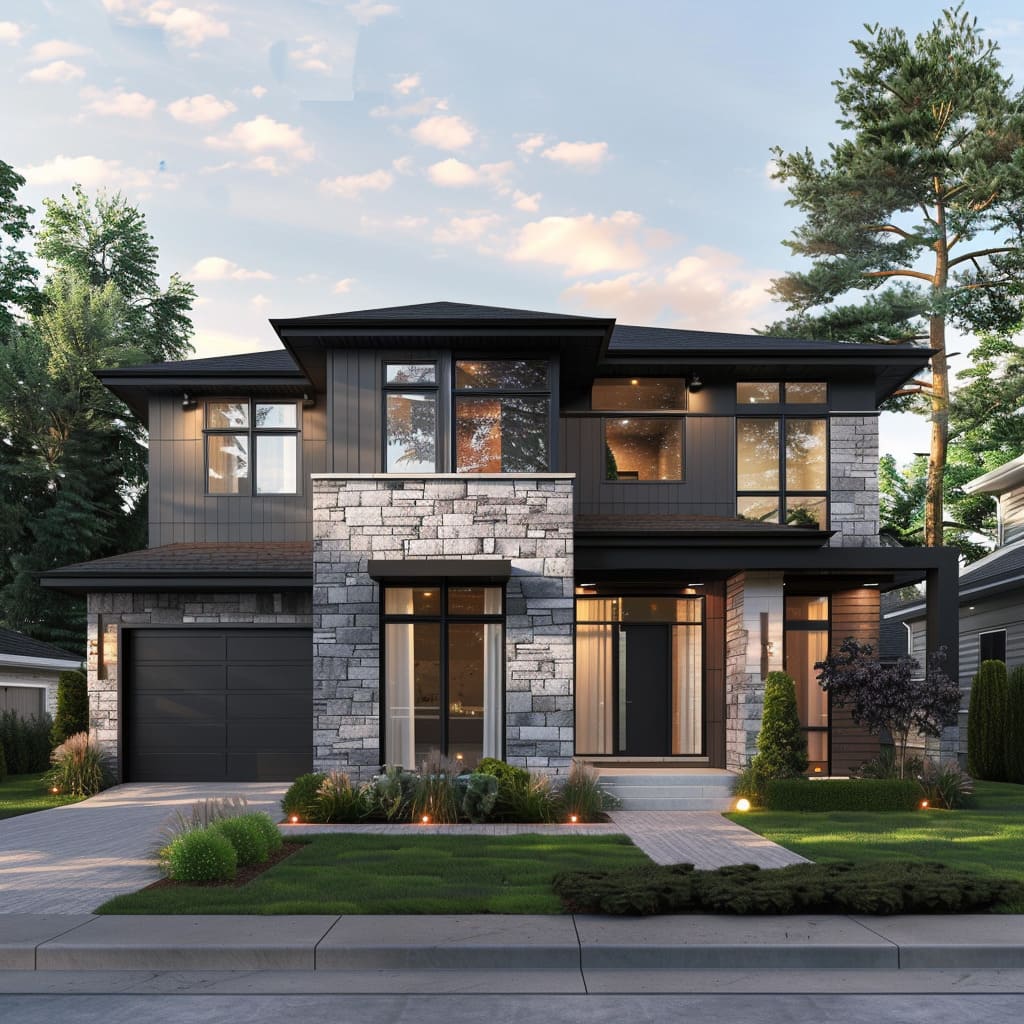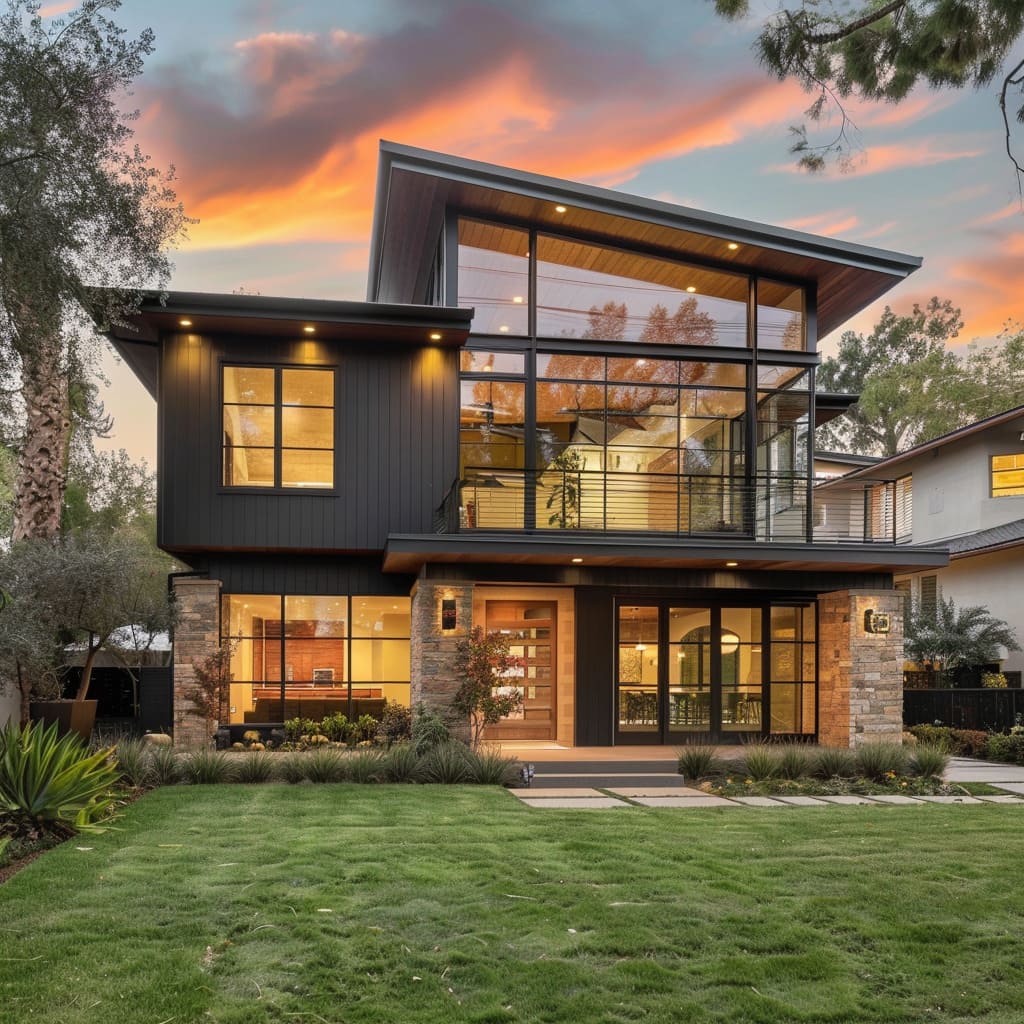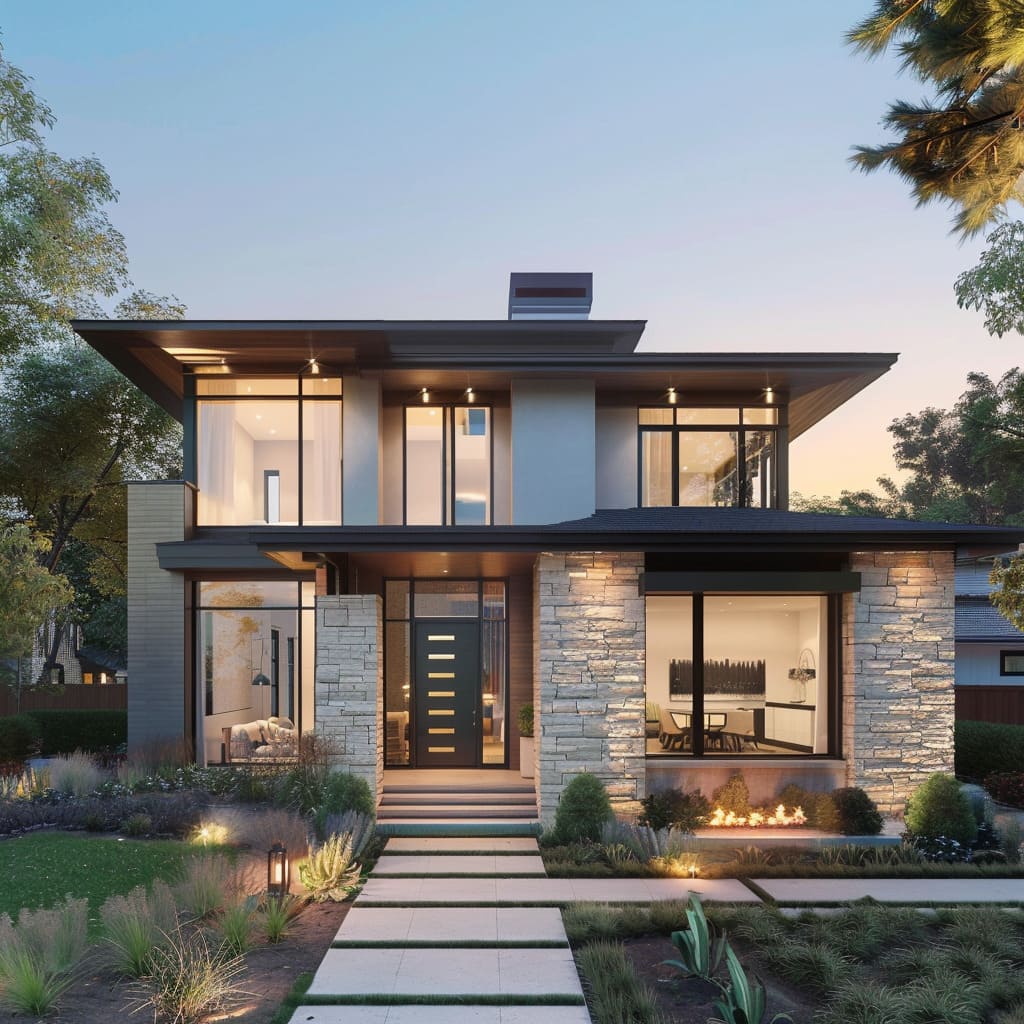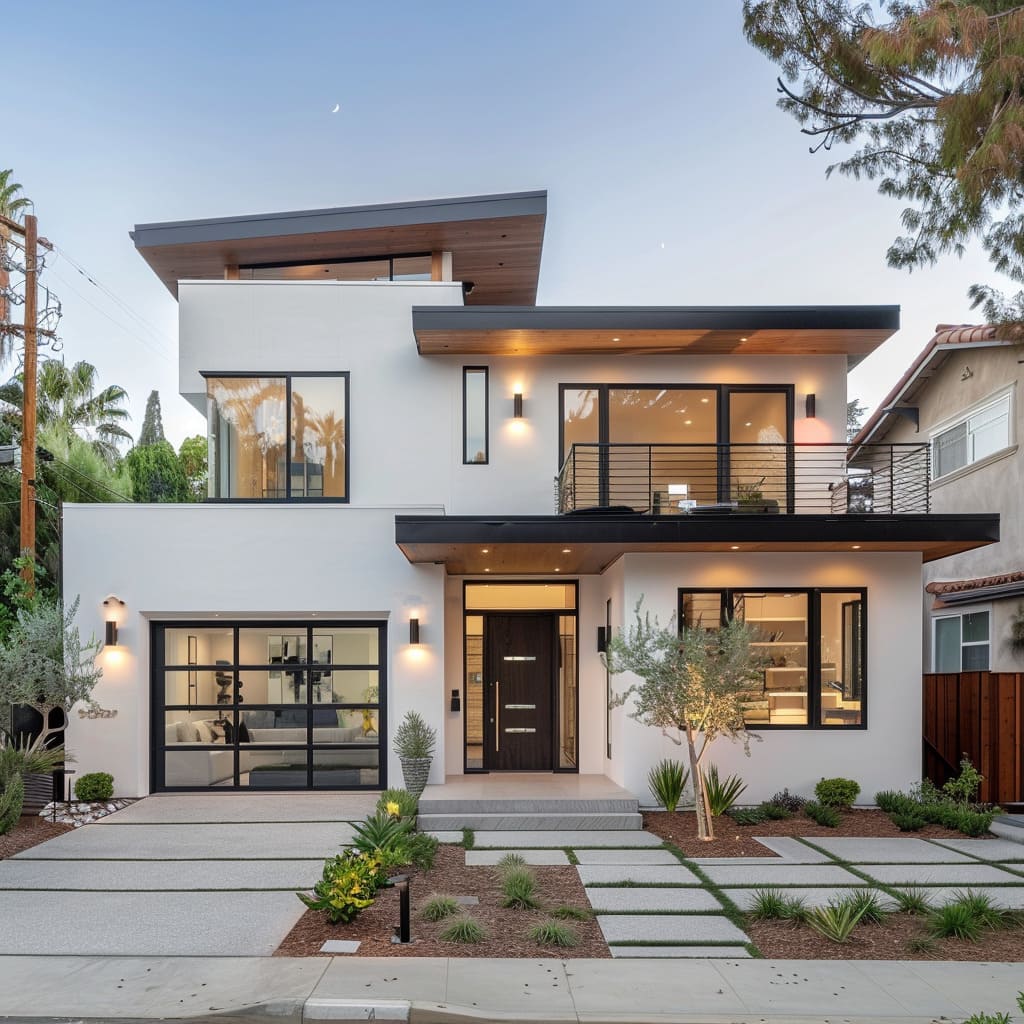Welcome to a comprehensive exploration of modern house design, where we delve into the key features and style insights that define contemporary living spaces. As trends evolve and homeowner preferences shift towards more sophisticated and minimalistic aesthetics, modern house designs continue to captivate with their innovative structures and seamless integration of form and function.
This article will guide you through the various elements that make up the backbone of modern architecture, from the clever use of materials to the strategic implementation of design features that blend indoors with outdoors. Whether you’re planning to build a new home or simply seeking inspiration, the insights provided here will help you understand what makes a house truly modern.
Architectural Geometry and Modern House Design
This section explores the essential architectural elements that shape the structural integrity and visual appeal of contemporary modern house designs. By focusing on the geometric and structural aspects, these characteristics contribute significantly to the homes’ distinctive and contemporary appeal.
Flat and Low-Pitched Roofs
These homes typically showcase flat or gently sloped roofs, enhancing the sleek, modern profile that characterizes innovative house designs today. This design choice not only emphasizes a streamlined aesthetic but also allows for better utilization of rooftop spaces, potentially for terraces or green roofs.
Such roofs typically require less material than more traditional pitched designs, reflecting a conscious choice for efficiency and a less obstructive visual impact.
Asymmetrical Facades in Modern Residential Architecture
The front views of these homes display asymmetrical designs, adding visual interest and a distinctive identity to each modern residential structure. This architectural choice breaks away from traditional symmetry, offering a dynamic appearance that captures attention.
Asymmetry allows architects to experiment with light and shadow, creating facades that are visually engaging throughout the day. This design strategy often involves unexpected placements of windows and doors, enhancing the uniqueness of each dwelling.
Broad Horizontal Lines
Modern architecture frequently incorporates broad horizontal lines through extended roofs and aligned windows, emphasizing the width and spaciousness of the structure. These lines guide the eye along the length of the building, creating a sense of stability and grounding.
Horizontal lines are also functional, as they help to integrate the various elements of the building into a coherent whole, making the structure appear well-settled in its landscape.
Varied Roof Levels
Different sections of these homes exhibit varied roof levels, creating a captivating layered appearance that is a hallmark of contemporary house designs.
This variation in height not only contributes to the aesthetic complexity of the design but also allows for different internal ceiling heights, which can define spaces within the home without the need for internal walls. Varied roof levels often result in interesting interior spaces with ample natural light and views.
Exposed Structural Elements in Modern Home Designs
Exposed beams and columns are often featured, showcasing the meticulous craftsmanship in modern home construction. This feature not only highlights the raw beauty of the materials used but also serves as a reminder of the engineering marvel behind the construction.
Exposed structural elements often contribute to the interior decor, acting as a focal point that adds character and a sense of authenticity to the space.
Natural Integration and Outdoor Features
Focusing on the seamless integration of natural elements and outdoor features, this section highlights how modern homes blend indoor and outdoor living spaces, enhancing the overall living experience and connection to the environment.
Prominent Use of Glass
Large glass windows and doors are central features that enhance visual openness, seamlessly integrating the natural scenery with the interior of modern homes.
This architectural choice allows for the blurring of boundaries between the indoor and outdoor environments, inviting the landscape into the living spaces. The extensive use of glass maximizes the penetration of natural light, reducing the need for artificial lighting during the day and providing unobstructed views that extend the perceived space of the interior.
Large Outdoor Spaces
Spacious patios and decks are a common feature, providing ample outdoor living space that complements the luxurious lifestyle expected in modern home designs. These areas are designed to be versatile, accommodating a range of activities from quiet morning coffees to large social gatherings.
Many modern homes also include outdoor kitchens and fireplaces, enhancing the comfort and functionality of these spaces. Additionally, homeowners can enjoy resort-style amenities, such as swimming pools and outdoor gym facilities, which offer a blend of relaxation and fitness right at home. With high-quality gym customer service, residents can ensure their equipment is well-maintained and ready for use at any time. These outdoor spaces are perfect for unwinding after a workout or hosting fitness classes, making them a valuable addition to any modern home.
The design often includes durable, weather-resistant materials and thoughtful landscaping to create a welcoming environment that is both functional and aesthetically pleasing. These outdoor spaces often feature stylish furniture and thoughtful layout to maximize comfort and usability.
Water Features in Modern Architectural Design
Many modern homes incorporate water features like fountains and reflective pools, which enhance the tranquil and luxurious atmosphere of the premises. The sound of moving water adds a calming element to the environment, masking city noises and creating a peaceful sanctuary.
Water features are often strategically placed to be visible from multiple vantage points within the house, ensuring that the soothing effects can be enjoyed both indoors and outdoors.
Integrated Green Spaces
Small gardens and landscaped areas are integrated into the design, bringing a touch of nature into the residential spaces.
These green spaces are not only aesthetically pleasing but also contribute to the ecological health of the environment by providing habitats for local flora and fauna. The thoughtful arrangement of plants can help to moderate home temperatures, reduce noise levels, and improve air quality, making these spaces as functional as they are beautiful.
Expansive Balconies
Large balconies provide a comfortable outdoor extension to the indoor living areas. These spaces are often designed with protective railings and overhead coverings that offer safety and weather protection, respectively.
Balconies can serve multiple purposes, from a quiet reading nook to an alfresco dining area, and are equipped with amenities such as built-in seating and space for container gardens. The design typically ensures that these balconies are an elegant continuation of the indoor living space, with materials and finishes that reflect the interior design.
Facade and Exterior Design
This category examines the materials and design elements that make up the exterior facade of the house, focusing on how these features contribute to the home’s modern aesthetic and curb appeal.
Modern Facade Materials
Materials like stone and wood are used in the facades, providing a contemporary yet earthy feel.
These materials are chosen for their durability and natural beauty, which age gracefully over time, blending the structures into their surroundings seamlessly. Stone offers robust protection against the elements, while wood provides a tactile warmth that is visually inviting.
This combination ensures that the buildings not only stand out for their architectural merit but also feel inviting and grounded in their environment.
Contrasting Color Frames
Dark window frames contrast with lighter walls, adding depth and definition to the structures. This design choice serves to frame the views as well as create a striking visual pattern that enhances the architectural lines of the building.
The dark frames act as a visual anchor, drawing attention to the windows and, by extension, the interactions between indoor and outdoor spaces. This contrast not only enriches the facade but also complements the modern materials used in the rest of the construction.
Accent Walls
Some external walls are designed with different materials or colors as accents, highlighting architectural features. These accent walls are strategic, often placed where they can catch the light or where they will be most visible from key viewing points.
This approach is used to break up the monotony of larger facades, giving each section of the structure its own identity. It also allows for creative expression through materiality, such as the use of textured tiles, patterned brickwork, or innovative plaster techniques.
Unique Chimney Designs
The chimney structures are often prominent and designed as focal points of the exterior. These are not just functional elements but are crafted to contribute to the overall aesthetic of the home.
With their substantial presence, they often feature innovative shapes and materials that echo the modern design ethos of the entire structure. The chimneys can be wrapped in the same stone as the facade or feature contrasting materials like metal or colored render, becoming standout elements that draw the eye upward and emphasize the verticality of the home.
Functional Aesthetics and Usability
In this article section, we explore how functionality merges with aesthetic appeal in modern home designs. These characteristics ensure that living spaces are not only visually appealing but also highly functional and comfortable.
Outdoor Lighting
Strategically placed outdoor lights not only illuminate the homes beautifully at night but also accentuate the architectural features. These lighting installations are carefully planned to highlight significant design elements like eaves, angles, and the unique textures of building materials.
They create a welcoming ambiance and enhance security by lighting up pathways and entry points. Energy-efficient LED lights might be used for both their longevity and their lower impact on the environment, reflecting a modern approach to home design.
Staircases as Design Features
Visible staircases through large windows add a dynamic vertical element to the otherwise horizontal layouts. These staircases are often designed as sculptural pieces themselves, using materials like floating wood planks, glass, or sleek metal that echo the home’s architectural language.
They serve not only as functional elements but also as visual connectors between the levels of the home. The placement next to large windows ensures they are highlighted by natural lighting, which transforms them throughout the day as the light changes.
Walkways and Paths
Paved walkways and stepping stones provide structured access through the landscape, enhancing the overall usability of the outdoor space. These pathways are designed with both aesthetics and functionality in mind, often using materials that complement the home’s exterior and landscaping.
They guide visitors on a deliberate journey through the garden, sometimes featuring curves that encourage a slower pace and appreciation of the surrounding plant life and scenery.
Glass Railings
Balconies and staircases often use glass railings to maintain an unobstructed view and a clean look. These railings add a touch of sleek modernity and ensure that views are preserved, whether looking out over a cityscape or a lush backyard.
Glass railings are also safety features that blend seamlessly with any design style, from ultra-modern to more traditional homes, providing a barrier without visual bulk.
Integrated Outdoor Seating
Built-in seating areas in the outdoor spaces merge functionality with design, offering a seamless look that encourages leisure and use of outdoor areas. These seating solutions are often constructed from the same materials as the decking or patio for aesthetic cohesion and can include features like built-in fire pits or water elements.
They provide a permanent solution for outdoor comfort without the need for additional furniture, making them ideal for entertaining or relaxing.
Atmospheric and Visual Impact
The final group focuses on the elements that contribute to the atmospheric and visual impact of the homes, particularly during different times of the day and through various design details that capture attention.
Stunning Nighttime Appeal
These homes are designed to look exceptionally striking after dark, with interior and exterior lighting showcasing their design.
This enchanting nighttime aesthetic is achieved through a careful arrangement of lighting that emphasizes architectural lines and surfaces, transforming the home into a luminous spectacle. Accent lights may illuminate pathways and highlight the texture of facade materials, while soft ambient lighting inside casts a welcoming glow through large windows.
This strategic use of light not only enhances security but also turns the home into a visual landmark after sundown.
Focal Fireplaces
Outdoor and indoor fireplaces serve as central features for gathering and aesthetic appeal. These fireplaces are often the heart of the home, providing warmth and a natural gathering spot for family and friends.
In outdoor settings, they extend the usability of garden and patio areas into the cooler evenings, creating a cozy ambiance. Inside, a well-designed fireplace can anchor the living space, drawing the eye with its impressive design and the warmth it provides.
Materials like stone, metal, and ceramic are often chosen for durability and to complement the home’s overall style.
Varied Window Sizes
A mix of large and small windows breaks the monotony and serves specific interior lighting needs. This architectural choice allows for controlled lighting in different areas of the house, enhancing functionality and ambiance.
Larger windows might be used in living areas to bring in expansive views and natural light, while smaller windows could be strategically placed in private areas to provide light without compromising privacy. This variation in window sizes also adds an interesting visual rhythm to the exterior of the home.
Dynamic Interplay of Shadows
The architecture is planned to create interesting shadow patterns that change throughout the day. As the sun moves, these shadows shift across the home’s surfaces, offering an ever-changing display that highlights the dynamic nature of the design.
This effect is particularly impactful in homes with bold geometric shapes and overlapping structural elements, where the interplay of light and shadow adds depth and motion to the facade.
Use of Concrete
Concrete is used not only structurally but also as a key visual component, enhancing the modern vibe. Its utilitarian appeal lies in its minimalist look and its ability to form various shapes and textures, which architects use to create striking designs.
Concrete’s thermal properties also contribute to energy efficiency in the home, maintaining interior temperatures more consistently. Visually, it can be left raw to show off its natural texture, or it can be polished or treated with different finishes to match a more refined aesthetic.
In conclusion, modern house design is characterized by its ability to merge aesthetic appeal with practicality, all while adhering to the principles of contemporary architecture. We’ve explored a variety of features that are pivotal in shaping the modern residential landscape—from the dynamic interplay of light and shadows to the integration of natural elements within the structure.
The future of house design promises even greater innovations as technology and architectural creativity continue to intersect. For homeowners and designers alike, understanding these key elements is essential for crafting spaces that are not only visually striking but also beautifully livable.
As we look ahead, the evolution of modern house design remains an exciting prospect filled with endless possibilities for reinvention and refinement.



